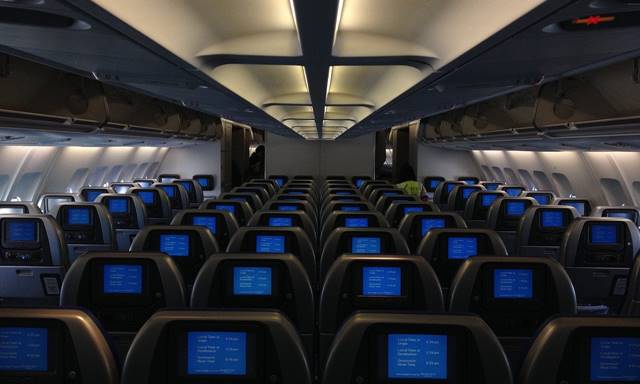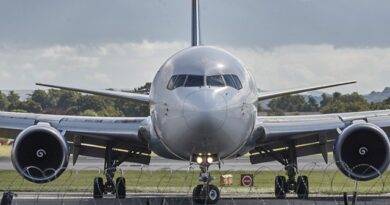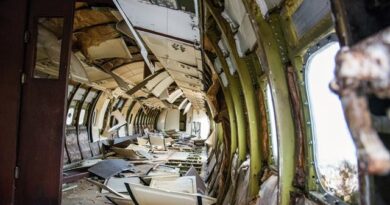Why are Airplane Cabins so Cold?
If you’ve ever found yourself shivering mid-flight, you might wonder why airplane cabins are kept so cold. The cool temperatures aboard airplanes are not just a matter of preference; they serve critical purposes related to safety, health, and passenger comfort. Let’s dive into the reasons behind the chilly conditions in airplane cabins.

1. Preventing Hypoxia
One of the primary reasons for maintaining cool cabin temperatures is the prevention of hypoxia, a condition where the body doesn’t receive sufficient oxygen. When flying at high altitudes, oxygen levels in the cabin air are naturally lower than at ground level. If the cabin were too warm, the chances of hypoxia-induced fainting or dizziness could increase. Cooler air helps reduce the body’s oxygen demands, lowering the risk of hypoxia for passengers (Reader’s Digest, Monroe Aerospace).
2. Managing Low Humidity
Airplane cabins are known for their extremely low humidity levels—often around 20%, compared to a typical indoor humidity of 40-60%. This dryness makes the air feel cooler than it actually is (Monroe Aerospace). The lack of moisture causes the body to lose heat more quickly, which can contribute to the sensation of cold. Low humidity is an unavoidable consequence of the pressurization system in airplanes, which mixes dry outside air with recirculated cabin air (Executive Flyers).
3. Balancing Cabin Temperatures
Planes fly at altitudes where outside temperatures can plummet to -70°F (-57°C). To counter this, cabins are typically maintained at temperatures between 70°F and 75°F (21°C to 24°C). While this might seem comfortable on paper, passengers sitting still for long periods can feel much colder than they would at home in a similar environment. Airlines prefer cooler temperatures because it’s easier for passengers to add layers to warm up than to cool down if the cabin gets too hot (Reader’s Digest).
4. Safety and Comfort of Electronics
Another important factor is the performance of onboard electronics. Flight control systems and cockpit instruments operate best in cooler environments. Excessive heat could lead to malfunctions in critical systems, so maintaining a cooler cabin ensures that the plane’s equipment runs smoothly (Executive Flyers).
5. Passenger Comfort
Balancing comfort for hundreds of passengers in an enclosed space is no easy task. Bodies generate heat, especially when packed tightly together. To prevent the cabin from overheating, air conditioning systems are often set to lower temperatures, which also helps improve air circulation and minimizes the risk of overheating during long flights. Moreover, cooler air reduces drowsiness and fatigue, helping passengers stay alert during the journey (Monroe Aerospace).
How to Stay Warm on Your Next Flight
If you tend to feel cold on airplanes, here are a few tips to help you stay warm:
- Dress in layers: Bring a sweater, scarf, or jacket that you can put on or remove as needed.
- Choose your seat wisely: Window seats tend to be colder because they are closer to the plane’s exterior (Executive Flyers).
- Bring warm accessories: Packing a pair of cozy socks or a travel blanket can help keep you comfortable.
- Stay hydrated: Drinking water can help combat the effects of low humidity, which can make you feel colder (Monroe Aerospace).
Conclusion
Airplane cabins are kept cold for a variety of reasons, ranging from preventing hypoxia to ensuring the optimal functioning of flight systems. While this chilliness might be uncomfortable for some, it’s a vital part of maintaining safety and comfort at high altitudes. Next time you fly, be sure to layer up and enjoy the peace of mind that comes with knowing the cabin’s temperature is designed to keep you safe. By understanding the science behind the cold, you can better prepare for your next trip and focus on enjoying your flight.
References and Further Reading Links:
- “Why Do Airlines Keep Their Cabins So Cold?” Travel + Leisure, 14 May 2019, https://www.travelandleisure.com/travel-tips/airlines-airports/why-do-airlines-keep-cabins-cold.
- “Why Are Airplanes So Cold?” Condé Nast Traveler, 21 June 2019, https://www.cntraveler.com/story/why-are-airplanes-so-cold.
- https://www.aviationfile.com/the-sterile-cockpit-flight-deck-concept/


